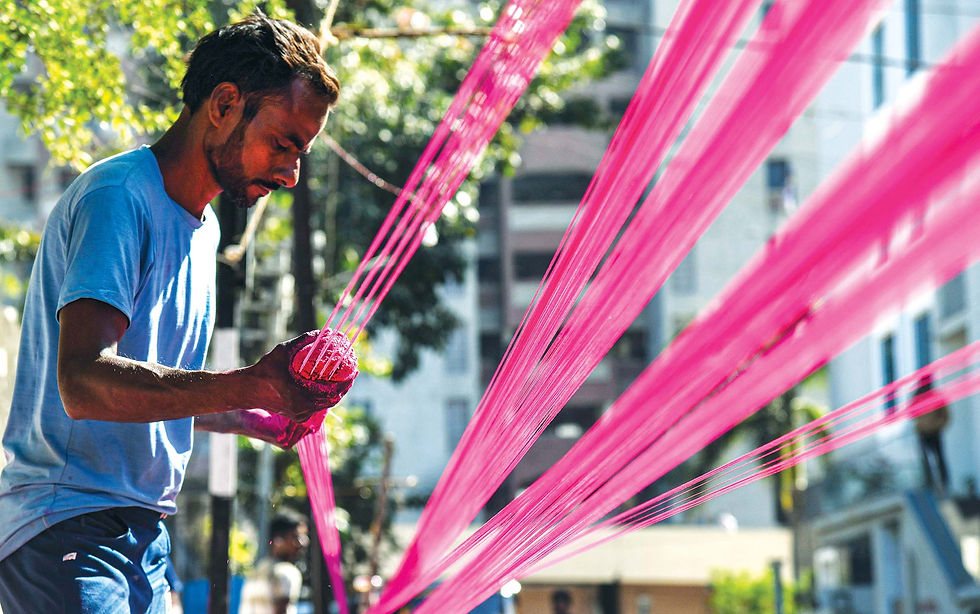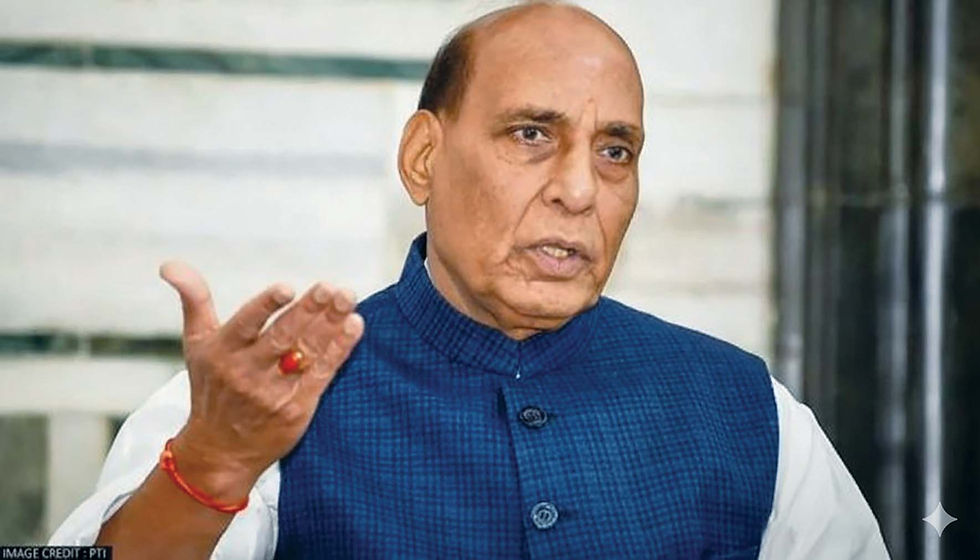Physical Reality, and not Politically Correct Rhetoric, must shape India’s Combat Policy
- Brigadier AS Ranade, VSM (Retired)

- May 27
- 5 min read
The National Defence Academy is poised to witness a historic milestone. On May 30, its first cohort of 18 women cadets will graduate - a moment made possible by the Court’s landmark 2021 ruling mandating gender-inclusive reforms in the military. Their induction comes at a time when the quest for gender parity in combat roles collides with the unforgiving demands of modern warfare, prompting difficult questions about merit, equality and operational readiness. In the second and concluding part, we talk about how soldiering is not a symbolic gesture.
PART - 2
Soldiering is no symbolic gesture but a brutally physical enterprise where weakness endangers all.

While the idea of gender equality in the armed forces may win applause in parliament or the hallowed portals of liberal academia, it wins no battles in the mountains of Kargil or the icefields of Siachen. While sports are easily quantified, combat is not. Yet it is far more demanding, be it physically, mentally or emotionally. It involves long, punishing advances under the weight of heavy battle loads that pull relentlessly at every step. These loads make no allowance for gender. For female soldiers, typically of smaller build, with less muscle mass and lower bone density, the strain is disproportionately higher even before the fighting begins.
The march could be arduous, through snow, jungles, deserts, could be long and energy sapping in pitch darkness and could tire out soldiers even before the combat begins. The combat operations may require reconnaissance and surveillance under trying conditions for a few days before the battle is joined.
Battles may stretch over days, fought at grave risk to life and limb. Victory rarely brings respite. Soldiers must hold ground, often repelling fresh enemy assaults despite mounting fatigue. Combat may require evacuating wounded comrades on shoulders, stretchers or piggyback, over long distances to the nearest aid post. Just to take one instance, during the 1999 Kargil War, Indian soldiers, particularly in operations like Tiger Hill and Tololing, had to carry injured comrades over treacherous, icy ridges under enemy fire, often without stretchers.
Combat entails hauling heavy guns and ammunition up steep slopes, freeing trucks mired in snow, mud or sand, and enduring long, sleepless vigils in trenches or bunkers. This punishing cycle, both physically and mentally exhausting, can repeat itself many times over in a single operation. Combat operations are a team effort with very high stakes. It is a question of life and death. You are either the victor or the vanquished. The team is as strong as the weakest link. To strengthen your weakest link is a necessity. Because men and women are physiologically differently endowed, it is an undeniable fact that any random group of male soldiers vis-a-vis a random group of female soldiers will carry heavier loads, march faster with battle loads, heave heavier weapons, shells and ammunition faster, push heavy vehicles stuck in mud and sand quicker and dig trenches deeper and faster, thanks to their higher aerobic capacity, more muscle mass and stronger bones. Male soldiers would thus have more staying power in combat. Therefore, more often than not, barring a few exceptions, female soldiers or officers in combat are likely to be these weak links. Do we need to necessarily add a weak link in a combat unit when we have stronger links available?
Privacy and hygiene take a beating during combat due to other overarching priorities. Even within a group of same gender male soldiers, it is difficult to find time or resources for either of the two. Adding a few female soldiers or officers would only complicate the problem for both genders and not help combat effectiveness.
Very few countries have accepted women in combat roles and that too in small numbers. Even there, the issue remains contentious. These are economically developed nations which are also culturally and socially very different from us. Amongst these, it is the US Army which has the most combat experience. They too are having a rethink on this policy with President Trump and Defence Secretary Hegseth voicing concerns against induction of women in combat roles by the previous dispensation a decade ago. Challenges that we face as a country are unique, with two belligerent neighbours towards our north and west with whom we have fought bloody wars in the past and both of whom possess nuclear weapons. We must not introduce a practice in the Army just because a few others with completely different geo-strategic dynamics within their geographical regions have done so. We should not overlook the fact that PLA has only 4.5 percent women and that too in non-combat roles. Pakistan too has negligible women in the Army, a fraction of whom are in combat support roles and none in combat roles.
Different physical fitness standards for men and women in battle physical efficiency and physical proficiency right from the Training Academies into the Unit life also militates against combat efficiency and effectiveness. And to even think of gender-neutral physical standards is being unrealistic.
While assigning combat roles to women soldiers and officers, they would not be enrolled against additional vacancies. They would in fact replace an equal number of male soldiers and officers. Do we need to do so for the sake of gender equality when there is no dearth of competent male soldiers and officers for combat roles? Are we all right replacing a Jasprit Bumrah and a Virat Kohli with India’s best female pace bowler and best batswoman when we are pitched against an all-male Pakistani National Cricket Team or the Australian all-male Cricket Team?
Not for once am I doubting the cerebral competence, physical fitness, resilience and diligence of women in the Army. Far from it. They are, and shall, continue to play a vital role in different capacities as part of the olive greens. I’m putting forth my opinion only against the advocacy of equality and opportunity for women in combat roles. Neither do I wish to take anything away from the warrior queens like the Rani of Jhansi Laxmibai, Ahilyabai Holkar, Rani Chennamma and their likes. Their gallantry and leadership on the battlefield were legendary. My rationale is only against the idea of doing it for the sake of gender neutrality as a policy. Because exceptions cannot become a rule.
War offers no consolation prizes. It demands a rare blend of physical power, stamina and mental resilience - traits more essential in soldiering than perhaps any other profession. Feminist ideals cannot override battlefield realities. This is not a metaphorical ring where a lightweight is matched with a heavyweight for the sake of parity. Galwan, Kargil and Siachen are reminders enough that combat in India’s harshest theatres remains brutal, intimate and punishing. Gender equality, however noble, must not come at the cost of military effectiveness.
Military combat is not a mixed doubles match or a co-ed relay; it demands relentless power in every blow, again and again. Those dismissing this as trivial would do well to recall the old adage, immortalised by George Herbert and later popularised by Benjamin Franklin:
For want of a nail the shoe was lost.
For want of a shoe the horse was lost.
For want of a horse the rider was lost.
For want of a rider the message was lost.
For want of a message the battle was lost.
For want of a battle the kingdom was lost.
And all for want of a horseshoe nail.
In war, even the smallest misjudgement can unravel the fate of nations. Gender equality if introduced in military combat units for the sake of feminism can have serious and unforeseen repercussions. I rest my case by concluding with utmost honesty and sincerity that combat arms in the Army should be best left to men in the olive greens.
(The writer is an Indian Army veteran and Vice President CRM, ANSEC HR Services Ltd. He is a skydiver and a specialist in Security and Risk Management. Views personal.)





Comments